 |
The
search for
new physics. |
| The 100 Year
Wrong Turn
in Cosmology |
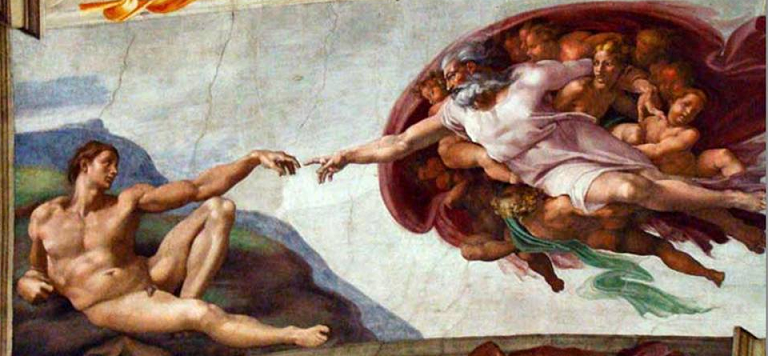 |
|
This is
the story of how the “God is Dead”
rationalism of
the Victorian era has been slowly subverted by the re-introduction of
religious
thought
into cosmology by scientists themselves. Whether consciously or
unconsciously, the the big bang as a concept resembles, as Ratcliffe
puts it, the "fingerprint
of a creator's initial act". Religious imagery has
entered everywhere into the terminology of the discipline - the
"fingers of
God", the "pancakes of God", the "God particle", the "moment
of
creation." First
penned by a priest, launched by a Quaker,
then praised by a Pope, the spiritual iconography
is hard to ignore. Although this timeline was first put together as an
examination of the dubious political and religious biases hijacking
scientific progress, it now has evolved into a detailed list of
the many papers in peer-reviewed journals that currently
contradict Concordance cosmology. As such, I welcome readers to use
this as reference for setting the record straight on some of the
controversial issues facing astrophysics today. |
 |
(1895)
H.G. Wells publishes "The Time Machine." The book was an
instant best-seller at the time. The
story is generally given credit for popularizing the idea of time travel.
As
often occurs in recent history, science mimics fiction. Whether
Einstein was influenced by the ideas of Wells is not clear, but it is
plausible to think that the general public, following exposure
to
this best-seller, was primed for acceptance of a scientific theory
based on the idea of a dimension of time. |
| (1905)
Einstein introduces
the idea of time rather than the speed of light as a variable in
space. The ether, not detectable due to the Lorentz transformations,
becomes
superfluous in Einstein's view. In
doing
so, he undermines Maxwell's physical model of space and the physical
basis for
the electromagnetic wave. The constancy of the speed of light is made a
postulate of the theory, but no explanation of how or why is given. The
theory also conjures a series of paradoxes regarding time. Einstein
provides the first
deconstruction of the rationalist Maxwellian models of space followed
by the
British school of Fitzgerald, Lodge and Kelvin. |
 |
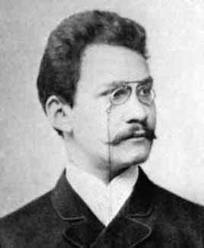 |
(1907)
Minkowski 4D spacetime is proposed as an alternative
to 3D space. He states: "Henceforth
space by itself, and time by itself, are doomed to fade away into mere
shadows, and only a kind of union of the two will preserve and
independent reality." The co-existence of the past,
present and future is a requirement
(substantivalism, perderantism). Free will no longer exists - the
future is already written, so mortals are condemned to simply
acting out the events of a preordained universe. He
subsequently
dies two years later. |
| (1913)
George
Sagnac publishes his paper on the rotating interferometer,
demonstrating that the speed of light is
not constant for a
rotating observer. The Sagnac effect is ignored by Einstein. |
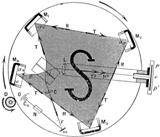 |
| (1916) General
Relativity - introduces Einstein's
geometric concept of gravity with Minkowski's
"absolute worlds"
hypothesis grafted to it. This new
theory of the medium (Substantivalism)
is not in space so much as it is in
time. A medium for electromagnetic waves is missing, the only waves
conceived
of in the fabric of space-time are gravitational waves. |
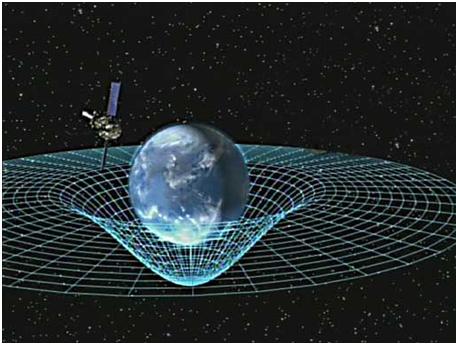 |
| (1917)
Einstein introduces his cosmological constant in his
paper "Cosmological
Considerations in the
General Theory of Relativity" as a means of explaining the stability of
the universe against the attractive force of gravity. Einstein
initially sees
the universe as being a steady state one, and needs a cosmological
constant
to explain it, since his general theory of relativity was incompatible
with a steady-state model. |
 |
 |
(1919)
Eddington eclipse
expedition - Authur
Eddington, a
devout Quaker,
confirms Einstein's prediction of the gravitational bending of light
despite
poor weather conditions. The results were of poorer quality and more
controversial than is commonly portrayed. Ernest
Rutherford reportedly said to Eddington: “You
are responsible for Einstein’s fame.”[ref] |
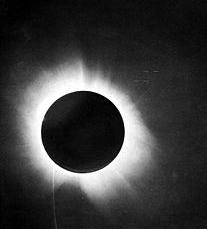 |
 |
(1921)
Thanks to Eddington, Einstein goes to America
and receives a ticker tape parade. Professor Chandrasekhar puts the
event
in context, paraphrasing
Rutherford:
“The war had
just ended; and the complacency of the Victorian
and the Edwardian times had been shattered. The people felt that all
their
values and all their ideals had lost their bearings. Now, suddenly,
they learnt
that an astronomical prediction by a German scientist had been
confirmed by
expeditions to Brazil and West Africa and, indeed, prepared for already
during
the war, by British astronomers. Astronomy had always appealed to
public
imagination; and an astronomical discovery, transcending worldly
strife, struck
a responsive cord. The meeting of the Royal Society, at which the
results of
the British expeditions were reported, was headlined in all the British
papers;
and the typhoon of publicity crossed the Atlantic. From that point on, the
American press played Einstein to the maximum."
|
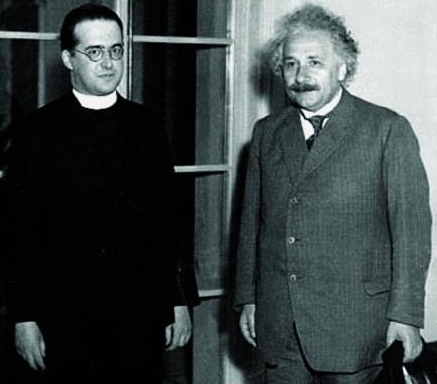 |
(1927)
Georges Lemaître - an ordained
catholic
priest and colleague of Eddington,
proposes the Primeval Atom theory, which
he refers to as "the
Cosmic Egg
exploding at the moment of the creation". Einstein says of it: "Your
math is correct, but your physics is abominable." However,
Einstein later
warmed to the idea, and became a proponent and supporter of Lemaître.
The
theory is renamed the Big Bang theory by Fred Hoyle. Lemaître's
argument is
that an expanding universe is an increasing disorder of the universe,
in
keeping with the law of entropy. This is despite the obvious evidence
to the
contrary that all celestial objects and all of life are self-ordering,
an-entropic structures experiencing periodic renewal. |
| (1927?)
A
purge of the University of California physics department of critics of Einstein’s theory
of relativity in the late 1920's is related by John Chappell
(1933-2002) after hearing of the prior event from a staff member. [ref][ref] |
 |
|
(1929:) Aurthur Eddington writes "The Nature of
the Physical World" and excites
the
interest of clery around the world by suggesting
the compatibility
of new science
with old religion.
"To
interpret man's religion to man's science in not only mutually
intelligible, but mutually
interdependent terms,
remains, as I believe, the great task of our time if we are to see any
stable order in events, or
make any consistent sense of experience." -Eddington. |
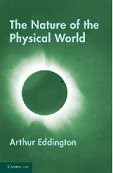 |
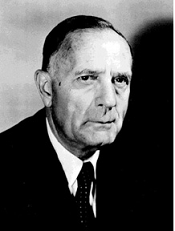 |
(1929)
Edwin
Hubble - Formulates the empirical
redshift distance law for galaxies. Hubble & Humason's 1931 paper carried
the
footnote:
"It
is not at all certain that the large red shifts in the
spectra are to be interpreted as a Doppler effect, but for
convenience they are
expressed in terms of velocity and referred to as apparent velocities."
Hubble felt that the data was in better agreement with light having a
loss of
energy to the intervening medium proportional to the distance it
travels
through space by what he called "a new principle of nature" (Hubble
1937). This was because if it were Doppler the light should appear to
be less
bright (due to a decrease in photon flux) than if it were a loss of
energy. Such a
brightness correction did
not fit the direct proportionality to distance data. |
 |
(1931-4)
Authur Eddington uses his influence to launch Lemaitre's Cosmic Egg
theory into
mainstream scientific discourse. He publishes his book "The Expanding
Universe" in 1933. Eddington is featured on the cover of Time Magazine
in
1934. The inscription under his name reads " His universe expanded into
popularity."
|
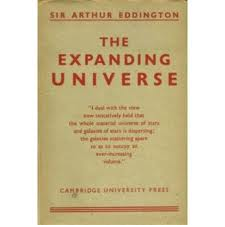 |
|
(1931)
Einstein abandons his cosmological constant theory. He calls it his
"greatest blunder." Despite this, many
modern
cosmologists now advocate reviving this
fudge factor term to
correct for the mis-predictions of the expanding universe
theory.
|
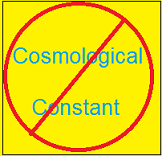 |
| (1932)
Jan
Oort measured
the motions of nearby stars in our Milky Way relative to the galactic
plane. He found that the mass of the plane must be more than the mass
of the material that can be seen. This is sometimes claimed to be the
first suggestion of dark matter. |
| (1932) The Einstein-de
Sitter Model
of the universe is proposed. It requires a "just right" amount of
matter so that the universe will expand forever. It assumed a
homogeneous, isotropic universe, with zero curvature, and zero
cosmological constant. However, the model calls for an age of the
universe of only 1.2 billion years, far younger than even the confirmed
age of the earth. Einstein insisted that the anomaly should be taken
seriously and not be explained away. “The cosmologic theory here
presented,” he wrote in 1945, referring to the relativistic big bang
theory, “would be disproved if it were found to contradict any such
results. In this case I can see no reasonable solution.”[ref] |
| (1933)
Fritz
Zwicky infers the
possibility of dark matter - he calculated the average mass of galaxies
within
the Coma cluster, and obtained a value 160x that expected from their
luminosity. He was for a long time sceptical of Big Bang. |
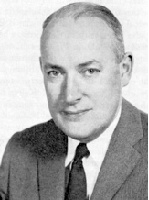 |
(1941)
Andrew
McKellar observes an interstellar temperature of 2.3 degrees
K - one of the
first detections of the CMB. Gamow is apparently aware
of this
discovery before he writes his 1948 paper, and thereby cannot claim
that he
predicted something
since it was already known (his claim that astrophysicists had found a
"nickel" exactly where he had lost one." )
McKellar
correctly predicted the temperature of interstellar space based solely
on the abundances of various interstellar gases, without resorting to a
big bang hypothesis. |
| (1946)
Gamow estimates the big bang relic radiation to be 50
deg. K. Saying that it is in reasonable agreement with the
actual
temperature of interstellar space (as believed at the time). |
| (1948-1949)
Alpher and Herman - predicts relic radiation of ~ 5 deg. K, then revise
this level back to 28
deg. K. |
| (1950's)
Vera
Rubin discovers that bodies orbiting around the outskirts of
galaxies
appear to be moving at the same speed as bodies orbiting near the
center. |
| (1950's)
- hardening
of attitudes with respect to scientific freedom. It is reported that
steady state universe theory is discouraged
by the president
of the Royal Society. |
 |
 |
(1951)
- Pope Pius XII
openly
supports Big Bang - saying:
"true science discovers God
in an ever-increasing degree."
In
his
1951 encyclical to
the Pontifical
Academy of Sciences, the pope continued,
“We
would
even say that
from this progressive
discovery of God . . . there flow benefits not only for
the scientist himself when he reflects as a philosopher—and how can he
escape
such reflection?—but also for those who share in these new discoveries
or make
them the object of their own considerations.” |
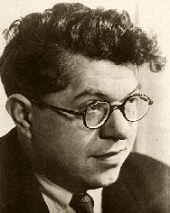  |
(1957)
Sir Fred Hoyle, William Fowler, and Geoffrey Burbidge publish the 104
page paper "Synthesis of the elements in Stars" .The paper is regarded
as one of the seminal papers of the 20th century and receives praise
from all quarters of the scientific community. Although William Fowler
later goes on to receive the nobel prize in 1983 for his role in this
work, Hoyle and Burbridge are excluded, with many of their colleagues
believing their exclusion
is because of their resistance to the Big Bang paradigm. |
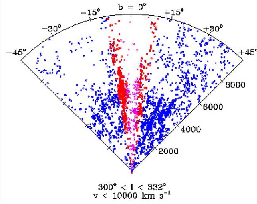 |
(1959)
Fritz Zwiky
characterizes the supercluster in Virgo. The cluster becomes known as "the
fingers of God", a series of lines of galaxies that are
pointing in the direction of our solar system - leading to the "Copernican
problem." The effect demonstates that applying the
Hubble distance relation to certain galaxy clusters can lead to large
artifacts, due to the apparent pecular motions of members of the
cluster. Another related effect became known as the "pancakes
of God."
|
|
(1963)
Alan Sandage and Thomas Matthews identify Quasi-Stellar Objects
(QSOs,hereafter
quasars)
in 1963. They were found to have redshifts significantly
higher than other objects seen on the sky. Their implied
remoteness
created difficulties for physical theory - they would be
impossibly bright.
Plotting
quasars’ redshift against brightness results in a wide
scatter as
compared with a smooth curve for galaxies. This seems to indicate that
quasars do not follow the
Hubble law, and there is no direct indication that they are at their
proposed
redshift distance. [ref]
|
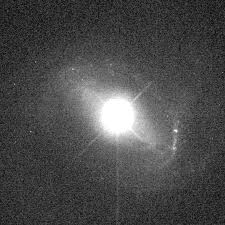 |
| (1964)
Dicke, Peebles, and Wilkinson
predict a relic radiation of 40
deg. K. |
| (1964-5)
Penzias
and Wilson detect
the cosmic microwave background radiation, and find it to be around 3K,
at odds
with most of the predictions by Big Bang advocates. However, the
discovery is immediately siezed upon as evidence of a relic radiation
from the proported big bang. |
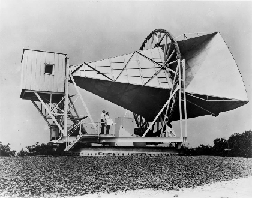 |
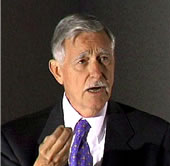 |
(1966)
Halton Arp publishes his atlas
of peculiar galaxies, which show evidence of high redshift objects
physically
connected to low redshift objects. These observation undermines the
redshift = velocity argument underpinning the big bang theory. |
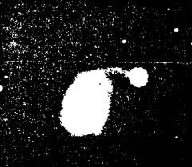 |
 |
(1972)
Fred Hoyle in his 1972 Russell
Prize lecture to the American Astronomical Society openly backs Arp's
findings. It is entitled "The
Developing Crisis in Astronomy." Arp reports
that after the lecture Martin Schwarzschild blurts out at them "You are
both crazy!" The lecture is then blocked
from
publication by the society. |
 |
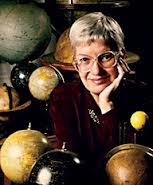 |
(1970's)
it was discovered in Vera Rubin's
study of the rotational speed of gas in galaxies that the total visible
mass
(from the stars and gas) does not properly account for the speed of the
rotating gas. Geoffrey Burbidge in Cosmology
Quest
reported that her observation time at Kitt Peak was nearly cancelled
since the oversight committee refused to believe that her observations
were real. Burbidge quotes Hoyle as saying: "anytime you point a new
telescope at the sky now you are only going to find what you already
know is up there." Not
surprisingly, this galaxy rotation problem is now explained by
the
presence of large quantities of unseen dark
matter. |
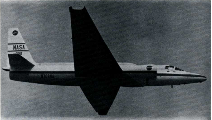 |
(1978)
Richard Muller publishes "The
Cosmic Background Radiation and the New
Aether Drift." in Scientific American. This casting
of the CMBr as an
apparent absolute reference frame for cosmic motion
encourages a new
generation of researches to search for an optically detectable aether
of space.
|
| (1986)
Brent Tully of the University of Hawaii reports detecting
superclusters of galaxies (Pisces-Cetus) 300 million light years (mly)
long and 100 mly thick
- stretching out about 300 mly across. It is estimated it would take 80
billion years to form such a long structure in the universe. The big
bang model calls for a 13.7 billion year age for the
universe |
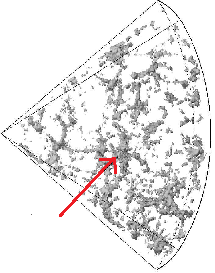 |
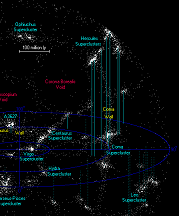 |
(1989)
Margaret Geller and John Huchra discover the great
wall – a sheet of galaxies more than 500 million light years
long and 200
million light years wide, but only 15 million light years thick. The
existence
of such monumental structures in space lead to questions about whether
they
could be formed in the time since the supposed big bang, since such
structures
would require 100 billion
years to form. |
(1991) Eric Lerner publishes "The Big Bang
Never Happened," including steady-state universe model.
Lerner cites the following critical evidence against the big bang:
- Light Element Abundances predict contradictory densities
-
Large-scale Voids are too old
- No room for dark matter
-
Surface brightness is constant - No Conservation of Energy
- Too many Hypothetical Entities--Dark Matter and Energy, Inflation
- Alignment of CBR with the
Local Supercluster |
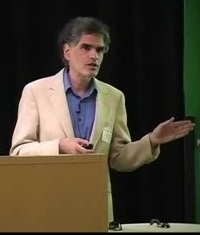 |
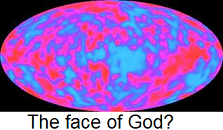 |
(1992)
The Big Bang is claimed proved by minute anisotropies in the Cosmic
Microwave Background radiation in different directions in space, based
on COBE data. However, this is contradicted by the smoothness dilemma
(also called the large scale smoothness problem). The CMB temperature
in different directions only fluctuates by one part in 100,000,
contradicting the Friedmann-Robertson-Walker cosmology model. George
Smoot apparently commented at the press conference that seeing the
fluctuations was like "seeing
the face of God." |
| (1998)
it is announced that the
Universe is not only expanding, but is accelerating under the influence
of a
mysterious property of space called dark
energy. [ref]
The energy is
entirely speculative. The process is called inflation. In order to
account for this new idea, the cosmological
contant
abandoned by Einstein as his self-proclaimed "biggest blunder" is now
re-instated. In a strange revision of history, NASA claims on their
website about dark energy that space may be filled with some kind of fluid
energy
(aether?!) and that Einstein was the first person to recognize that
empty space is not nothing (in fact when everyone thought that space
was filled with something, i.e. a fluid
energy (aether) Einstein was the first person to say that
space was empty!!!) In disbelief? - click here |
 |
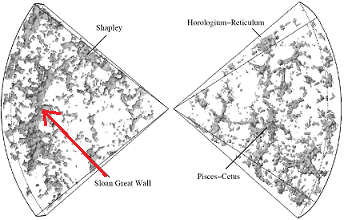 |
(2003)
Another large scale
structure in the universe, the Sloan
Great Wall, is
discovered. It is 1.36 billion light years long. It is estimated to
have taken
250 billion years to form. [ref]
|
| (2005) Analysis of VIRGOHI21,
an extended region of hydrogen in the Virgo cluster, is claimed to be a
"dark
galaxy"
, i.e. a high concentration of dark matter in a region of space largely
devoid of stars. It is predicted to have a mass to light ratio of
500:1. Analysis of the hydrogen gas cloud suggests that it is rotating
and may likely be a tidal tail of NGC 4254. Since these observations
are based solely on the lensing of light, it might be equally plausible
to assume that starlight is being lensed by the rapidly rotating
hydrogen cloud, rather than by gravity. It is well known that rotating,
heated gas and/or plasma can form a density gradient which serves as graded
index lens.
This might explain the similar observation with Abell 520 (2012) where
gravitational lensing was claimed to have been detected in the
turbulent gas cloud between two colliding galaxies. Interstellar medium
(ISM) is known to be able to disperse,
refract and even Faraday rotate electromagnetic waves passing
through it. |
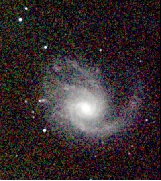 |
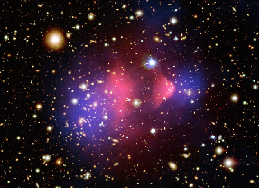 |
(2006)
Menlo
Park
researchers
claim to have observed dark matter directly in galaxy clusters
3 billion light years away, using gravitational lensing. In this case
the dark matter is said to have separated from the real matter, thereby
it is found in isolation. This contradicts the theory of dark matter,
since it is supposed to be found associated with real matter. The
presumption of dark matter lensing in the bullet cluster contradicts
the cold dark matter
model since the required infall velocity is too high. |
 |
(2007)
Geoffrey Burbidge, in an interview with Vision,
discussed the biases surrounding CMB research this way: “Literally everyone I know
who is doing observations of the CMB believes from the time they start
on the project that they know where it comes from,” he says. “There is
nobody in the group (and they wouldn’t let anyone into the group) who
is skeptical, who would say ‘Maybe this is the wrong interpretation.’
Those people do not exist. They are not allowed to exist. You couldn’t
become a graduate student if you didn’t believe what they believe.” |
| (2007)
Kenneth
Nicholson publishes a new method using Newton's law of
gravitation to explain how the existing mass distribution of a galaxy
without dark matter is sufficient to account for the rotation velocity
profile. The method divides the galaxy into a series of rings
subdivided into constant density segments. Each segment will
cause an acceleration on a test mass at a given radius. The total
acceleration at a given radius by the interactions of the mass
in the rings with their appropriate densities is then calculated. The
method shows that galactic rotation naturally deviates from the virial
theorem and flat the rotation profiles come out
spontaneously without further assumptions such as dark matter or
MOND. |
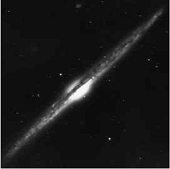 |
| (2007)
Astronomer
Hilton Ratcliffe notes the psychological attraction of such a
convergence of
science, spirit and faith. [ref] “The idea of an infinite
universe just wriggling around
aimlessly is an anathema to the collective human psyche,” he writes in The
Virtue of Heresy. “In the face of burgeoning
atheism in scientific
philosophy, man uttered a sigh of relief and clutched to his bosom a
universal
pattern that looked suspiciously like it might just be divine!”
Mentally, the idea of a big bang may be easily morphed into the
fingerprint of
a creator’s initial act. |
| (2007)
The "axis
of evil"
problem with the cosmic microwave background (CMB) becomes a widespread
topic of discussion. It is found that the complex pattern of cold and
warm spots in the CMB closely line up with the ecliptic and
thus
our solar system. Since the CMB radiation should not align with any
unique observer in the universe, this calls into serious question
whether the CMB is truly relic radiation from the big bang. Since the
alignment is so strong, some have suggested that it could be due to a
cloud of dust in the solar system masquerading as a cosmological
CMB. |
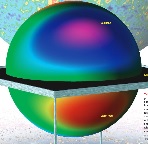 |
|
(2009) a paper by David Crawford
is published arguing that observations of type 1a supernovae out
to redshift z= 1.6 are not consistent with the expected time dilation
of an expanding universe model. Crawford criticises earlier papers that
had reached this conclusion. When peak magnitude is computed using
concordance cosmology there is a strong bias that results in weaker
supernovae being selected at higher redshifts, he argues, and when
total energy is used instead, it is observed as constant as a
function of redshift, showing that without any fitted parameters the
total energy is independent of redshift. He states " there is no
experimental evidence for departures that have been ascribed to dark
energy. " The model is consistent with a static cosmology and
doesn't require unusual evolution of supernovae production rates at
redshifts greater than z=0.5. |
| (2010) M.R.S.
Hawkins publishes the paper " On time dilation
in quasar light objects." Hawkins finds that quasars do not
exhibit the expected time dilation with redshift distance that is
expected by the big bang theory - in fact quasars presumed to be 6
billion light years away pulse at the same rates as ones 10
billion away. This is powerful evidence that quasars are not
at their redshift distances as was always argued by Hoyle, Arp and
Burbidge. Although Hawkins tries to downplay
this contradiction with the big bang model, he does say "
there is surprising little direct evidence that the universe is
expanding." |
 |
| (2010)
Gallo
and Feng
publish " Galactic Rotation Described by a Thin-Disk Gravitational
Model without Dark Matter." In concurrence with Nicholson, the method
uses conventional Newtonian dynamics without resorting to dark matter
or MOND. They point out that the Keplerian rotation curve that works
with a centralized mass doesn't work for galaxies where the
mass distribution is anisotropic and far from spherically
symmetric. They cite numerous authors going back
to 1995 who
have already approached the problem the same way. |
 |
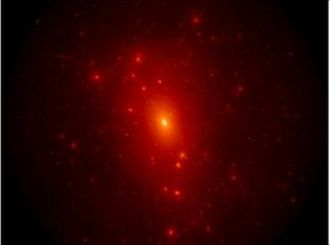 |
(2011) Dwarf galaxy models
suggest dark matter theory may be wrong, according to a BBC news
article.
These galaxies are thought to be made up mostly of cold dark matter,
but models using the lambda CDM theory do not match up with
what
is observed. The "disturbing developments" as they call them may only
be overcome by replacing the never detected cold dark matter with a new
( imaginary?) substance called "warm dark matter."
|
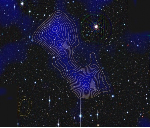 |
(2012)
Dark
matter tendrils
claimed to be detected, again
using gravitational lensing studies of a filament of gas between Abell
222 and Abell 223. The filament is parallel to our direction of sight,
amplifying the lensing. However, as explained earlier, rotating hot gas
is a very effective lens for light since it forms a graded refractive
index, so nothing can be proved about the existence of dark matter
before other potential sources of interstellar lensing have been
properly excluded.
|
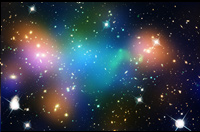 |
(2012)
A Dark
matter core
nearly devoid of galaxies is claimed to have been discovered in Abell
520, located 2.4 billion light years away. This result presents a
challenge to the theory of dark matter, since galaxies are supposed to
be anchored to the invisible substance. A second
paper
however contradicts this claim. The uncertainty call into question the
reliability of implied mass claims based on light lensing from
such extreme distances in space, which may be caused by much more
mundane effects. Abell 520 also contradicts
the cold dark matter model. |
| (2012)
Galaxy MACS0647-JD
discovered, at 13.3 billion years old, making the
supposed 13.7 billion year age of the universe questionable since the
galaxy would have had only 400 million years to form.
However, in
the Lambda-CDM
model the
entire process of deciding the distance to a galaxy is "fixed" to
the size of the universe predicted by the big bang theory. In
this model, every increasing redshifts lead to logarithmically smaller
distance increments, such that at infinite redshift Z the universe is
13.7 billion years old. So no galaxy can be found with an age
higher than the preordained 13.7 billion light years, ever! Lambda-CDM
includes a cosmological
constant. |
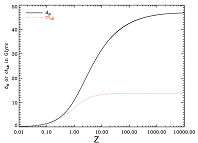 |
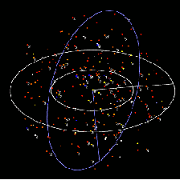 |
(2012)
A Chilean
study of the local solar neighbourhood is performed looking
for
evidence of dark matter by examining the motions of 400 nearby stars up
to 13,000 light years away. Zero evidence is found that their motions
are effected by any presumed dark matter. In a second study, a Russian
researcher looked at eleven thousand nearby galaxies to see
what dark matter might be found around our galaxy, and found far
less than predicted.
|
(2012)
Microwave background temperature is expected to increase with redshift
in order to support the notion that the universe is
expanding.
Although initial studies appeared to support this idea, more recent
work by Sato
et.al using
higher resolution analysis found CMBr temperature at redshift = 0.89 to
be between 1.1 and 2.5K, well below the expected 5.14K. They
identify contamination bias occurring in lower
resolution
measurements that call into question the previous positive results of
earlier papers.
|
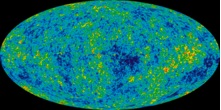
|
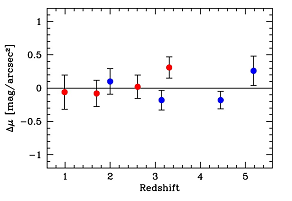
|
(2014)
Lerner, Falomo and Scarpa publish a paper
using the Tolman test for surface brightness of near and far galaxies
based on redshift data. They conclude that the observations are
consistent with a static Euclidean model of the universe. Further
analysis here
explains
that in a Big Bang universe, distant galaxies should not only be dimmer
but also bigger, since the light from these objects should have
expanded with space, further dimming their light, which is not what was
found.
|

|
(2015)
Melia and Lopez-Corredoira perform a cosmological test based
on a
statistical analysis of galaxy distributions. This is based on the
changing ratio of angular to spatial/redshift size of (presumed)
spherically-symmetric source
distributions with distance and is called the Alcock-Paczynski test.
They also incorporate Baryonic Acoustic Oscillation (BAO)
peaks
to overcome distortions due to gravitational effects. The analysis of
BAO peaks from SDSS-III/BOSS-DR11 was found to strongly disfavour the
current concordance (ACDM)
model, and favoured either a
steady-state/tired light model of the universe, or an expanding Rh=ct
universe with no inflation.
|
 |
(2016)
A new paper
describes how spectral distortions of the Cosmic Microwave Background
(CMB) should be visible based upon the current models of the early
universe. These would be deviations from the purely planckian spectrum
caused by injections of energy at various times during the presumed
evolution of the universe. The author describes how although the
expectation of these distortions is widely held and discussed in the
literature, all attempts to find it in the CMB data have failed.
|
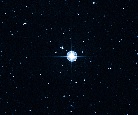 |
(2017)
The oldset known star in the universe, HD140283,
also known as the Methuselah star, is now reported by Wikipedia to be
14.46 billion years old. This is 700 million years older than
the
big bang itself! The error uncertainty is large enough that there is a
small chance, just barely, that it could fit into the age of the
presumed big bang universe. However, wikipedia notes that this
star, due to its metal content, would have to be a second generation
star, so another star must have gone through its entire lifespan prior
to this one to provide the elements it currently has, which would put
the age of this two generation process well outside of the plausible
limits of the 13.799 billion years.
|

|
(2017)
Is dark matter finally dead? A Scientific
American article
in November of this year called "Dark Matter Hunt Fails to Find the
Elusive Particles" describes how a series of high profile and immensly
expensive experimental investigations have all failed to find any
evidence of dark matter. These include the XENON1T experiment at Gran
Sasso National Laboratory in Italy, the PandaX experiment in China,
NASA's Fermi telescope project, as well as the efforts at CERN. All
have come up negative.
|
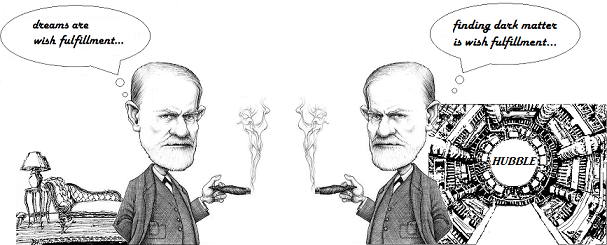 |
| *************************** |
| "Through
the reading of popular scientific books I soon reached the conviction
that much in the stories of the Bible could not be true. The
consequence was a positively fanatic orgy of freethinking coupled with
the impression that youth is intentionally being deceived by the state
through lies; it was a crushing impression." - Albert Einstein, 1954 |
| *************************** |
|
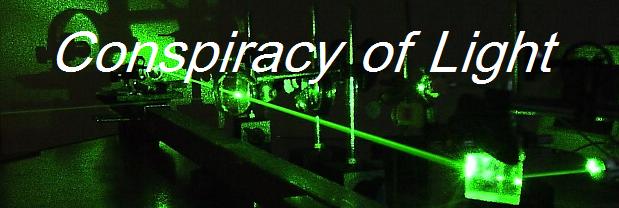 |
|
|